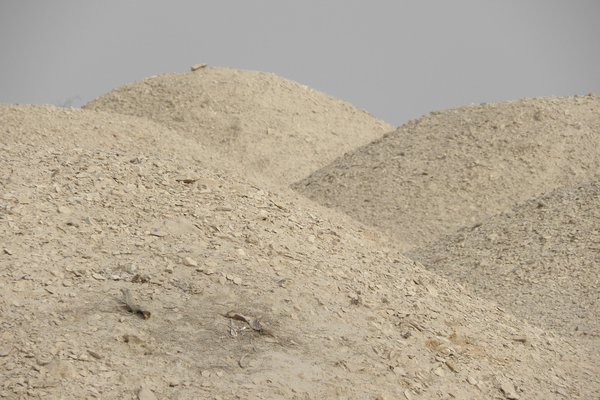Bahrain
Dilmun Burial Mounds
The Dilmun Burial Mounds represent the architecture and sepulchral traditions of Early Dilmun culture.
Newly gained prosperity led the ancient inhabitants to start using less fertile land for the development of these cemeteries. There are thousands of burial mounds, spread across 21 locations. Each of the mounds - usually meant for one deceased person - is composed of a central stone chamber that is enclosed by a low ring wall and covered by earth and gravel. The graves can vary considerably in size and style and are not all from the same era. People from different social strata were buried this way, and the more elaborate mounds also included alcoves filled with mortuary gifts.
Community Perspective: the mounds and the fields are underwhelming, but the sheer numbers of them do leave a lasting impression. A’Ali seems to be the best place to visit and is also reachable by public transport. The National Museum of Bahrain has good displays of these tumuli.
Site Info
Official Information
- Full Name
- Dilmun Burial Mounds (ID: 1542)
- Country
- Bahrain
- Status
-
Inscribed 2019
Site history
History of Dilmun Burial Mounds
- 2019: Inscribed
- Inscribed
- 2017: Requested by State Party to not be examined
- Type
- Cultural
- Criteria
- iii
- iv
Links
- UNESCO
- whc.unesco.org
- Official
-
- culture.gov.bh — Bahrain Authority for Culture & Antiquities
All Links
UNESCO.org
- whc.unesco.org — whc.unesco.org/
Official Website
- culture.gov.bh — Bahrain Authority for Culture & Antiquities
Community Information
- Community Category
- Secular structure: Burial
Travel Information
Recent Connections
-
Grave looting or robbing
"Excavations proved that grave robbers …
-
Early Archaeology
"The burial mounds were mentioned by ex… -
Archaeological potential
Most of the tumuli have not been excava…
Connections of Dilmun Burial Mounds
- History
-
-
Bronze Age
"The 21 property components selected for nomination reflect the history of Bahrain throughout the Bronze Age." (Nomination file, p. 64) -
Historical Food Remains
"Diverse faunal remains have occasionally been found in the burial mounds. (...) Since the majority of animal remains are limited to eatable species, it can be assumed that it was part of a funeral meal (...)." – "plant and animal remains provide clues on the Dilmunite diet (...)" (Nomination file, p. 83, 148)
-
- Architecture
-
-
Urban fabric
"(...) 15 site components consist of 13 single royal mounds and two pairs of royal mounds, all embedded in the urban fabric of A'ali village." (OUV) -
Dry Stone Construction
"Early and Late Type Mounds (...) are regularly-built grave chambers (...). Walls are built with a dry-stone technique and covered by capstones slabs." (AB Ev)
-
- Damaged
-
-
Grave looting or robbing
"Excavations proved that grave robbers regularly targeted the burial mounds throughout antiquity." – "Some mounds show signs of grave looting. The majority of these intrusions is believed to derive from ancient times and is hence part of the Dilmun Burial Mounds´ extraordinary history." (Nomination file, p. 131, 155)
-
- World Heritage Process
-
-
Already inscribed still on T List
Hamad Town Tumuli Moundfield -
Extension Supported
"Also recommends that, as already planned by the State Party, an extension of this property to include Umm Jidr and Wadi as-Sail mound fields be submitted in the foreseen timeframe." (Decision 43 COM 8B.12)
-
- Human Activity
-
-
Writing systems
"(...) hard evidence for dynastic kingship at A'ali and identification of the tombs of two named kings, using cuneiform inscriptions recovered from one of the mounds (Royal Mound 8)." (AB Ev) -
Historical Graffiti
Royal Mound 11: Visitors have left several graffiti inside the burial chamber, some dating back to more than 100 years. These graffiti became a layer of the mound´s history." (Nomination file, p. 117)
-
- Constructions
-
-
Tumuli
"Six of the selected site components are burial mound fields consisting of some dozen to several thousand tumuli. Together they comprise about 11,774 burial mounds." (OUV) -
Cemeteries
"The ancient inhabitants of Bahrain understood the special geological configuration of the island and used less fertile land for the development of these extraordinary cemeteries." – "The serial property displays the original distribution of Early and Late Type Dilmun Burial Mounds, organized in individual cemeteries." (OUV) -
Necropolises
"The latter is best reflected in the extensive necropoleis with their variety of graves, comprising burial mounds of various size, as well as chieftain mounds and the grandest of them all, the so-called royal mounds."(OUV) -
Ziggurat
Tombs: The majority of the tombs were constructed as single-storeyed small cylindrical towers while some of the bigger two-storeyed examples were built in a ziggurat-like shape (OUV) -
Tombs
The majority of the tombs were constructed as single-storeyed small cylindrical towers while some of the bigger two-storeyed examples were built in a ziggurat-like shape (OUV)
-
- Timeline
-
-
Built in the 3rd Millennium BC
Built between 2050 and 1750 BCE
-
- Science and Technology
-
-
Early Archaeology
"The burial mounds were mentioned by explorers and travellers to Bahrain throughout history. The first recorded excavations were in the late 1880s." (AB Ev) -
Archaeological potential
Most of the tumuli have not been excavated
-
News
No news.
Recent Visitors
Visitors of Dilmun Burial Mounds
- Alexander Barabanov
- Alexander Lehmann
- alicemears
- Ana Lozano
- Andrew0181
- Artur Anuszewski
- Bill Koo
- Bill Maurmann
- Bram de Bruin
- c82wc1
- Christoph
- Christravelblog
- Csaba Nováczky
- CugelVance
- del
- Dimitar Krastev
- Els Slots
- Ertai
- Eva Kisgyorgy
- Fan Yibo
- Frederik Dawson
- George Gdanski
- Gernot
- Harry Mitsidis
- Iain Jackson
- Ivan Rucek
- janameerman
- Jarek Pokrzywnicki
- Jay T
- Jean Lecaillon
- Jeffrey Chai
- Jezza
- John Smaranda
- Jonas Kremer
- Jon Opol
- Krijn
- Loic Pedras
- Luis Filipe Gaspar
- Maciej Gil
- marcel staron
- Marcobrey
- Mariam
- Martina Rúčková
- Matthewsharris
- michaelsballard
- Mihai Dascalu
- Mikko
- Milan Jirasek
- Morodhi
- Philipp Peterer
- Piotr Wasil
- Priyaranjan Mohapatra
- Rachel Perkins
- Rahelka
- Randi Thomsen
- Reza
- Rodinia
- Roger Ourset
- Roman Bruehwiler
- Roman Raab
- Sandmann15
- Slavi
- Solivagant
- Stanislaw Warwas
- Svein Elias
- Szucs Tamas
- Tamara Ratz
- Taotao Chen
- Tarquinio_Superbo
- Thomas Buechler
- Valentina
- Vanessa Buechler
- Vernon Prieto
- VMThumper
- Wojciech Fedoruk
- Xiquinho Silva
- Yongcheng Liu
- Zach
- Zoë Sheng
Community Reviews
Show full reviews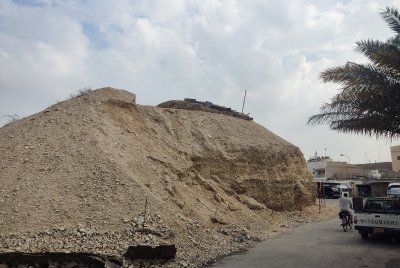
I visited A' ali on the 23rd of january. Just a few hours before I had marked all dilmun burial mounds on an off-line map of maps.me in order to find all relevant mounds in that area even without an internet connection.
A'ali is easily reachable by public transport. I just took the bus from Manama's central bus station to Isa Town Bus Terminal and from there another bus to A'ali . The bus stopped a stone's throw away from the royal burial mound nr. 2 ( If I remember correctly) . I visited as many burial mounds as I could in A'ali. I lost track of how many I really saw there. One of them had its own guard and a tiny guardhouse. I just asked the african guard if I could go inside. He had no objections and even opened the gate for me. All other mounds were fenced off by a more symbolic kind of fence. I climbed up on some of them.
I spent around 2 h in A'ali, visited many burial mounds,had a karak tea in an indian cafe and a long chat with two elderly australian ladies.
All in all I had a pleasant time in A'ali and the trip was worth the spent time and energy. A'ali is a strange place with all the mounds plastered around the city. Makes it a kind of unique place in the world.
As Frederick wrote:""" The mounds were quite underwhelming, but collectively …
Keep reading 0 comments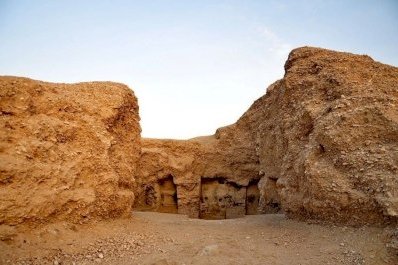
I visited Dilmun Burial Mounds before UNESCO recognized its status. This World Heritage site was part of my private half day tour around Bahrain. Actually, It was not a part of the original tour program, but after had a fruitful discussion on ancient Dilmun civilization with my historical buff guide during our walking tour to see Pearling Heritages in Muharraq, my guild wanted to show me the Dilmun royal mounds, so after negotiated with a driver, we squeezed Dilmun Mounds in the plan. We went to city of Aali, after made a brief stop to see few remains water springs of Bahrain, it hard to believe that Bahrain was once full of water springs and very green island and was considered a heaven on earth, I found myself to be standing on the top of the Royal Mound No.1.
The large earth mound was uninspiring surrounded by the city, similar to what I saw royal tombs in Japan near Nara, a big hole show ruins of multi burial chambers and indicated that it was already excavated by archaeologists or grave robbers. My guide recommended me to go to the top of the mound to see the view of whole city, something that should not be allow anymore after UNESCO listing. From the top I saw other big royal mounds blending with the whole urban landscape, a very interesting sight. After my guide explained different styles of burial ritual of Dilmun and what I should see in the national …
Keep reading 0 comments
Visit: January 2016. It is quite difficult to get around Bahrain without spotting at least one of the burial mounds. They are numerous and spread around the island. Just be aware that not all of them are inscribed. I mainly visited A’ali field, passing by other fields by car. The place is far from touristy. It’s actually next to a military premise and the soldiers there checked my camera to make sure I did not photograph their structures. There is not much to see anyway. The fields look like the work of a giant mole. At the time of my visit (2016) there was no information on site and no special protection of the mounds.
I must admit I am not especially fond of Bahrain. I didn’t warm up with the country and tried to visit as many TWHS as possible in order to avoid having to go back. None of them were good. But luckily my efforts paid off with this visit. I understand the value of these mounds, but due to the lack of information and the fact that it’s just a bunch of hills this was a dull visit.
Just drive down Shaikh Salman southbound. You will see the mounds from the highway.
Keep reading 0 comments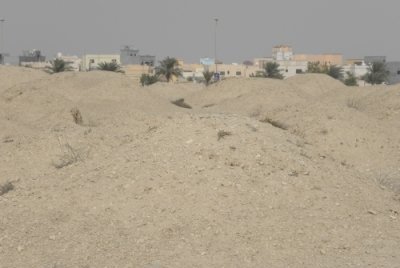
The Tumuli fields are the most distinguishable historical landmarks of Bahrain. There are a number of them in the northwest of the island. I visited them while driving around this small country for a day, taking in its first oil well and Riffa Fort as well.
The Tumuli field at Hamad was the first one that I encountered - it's located next to the main road. Somehow I had thought of it as a remote archaeological site, but this field (and the others that I saw) is right in the middle of a town. Think of the size of a football pitch or a small park. And then it's just sandy hills with small rocks as far as you can see. Unfortunately, there are no interpretative signs on site.
The bigger field at A'Ali I even found full of garbage and litter. I don't think that they are being worked into proper tourist sites.
The National Museum of Bahrain has good displays about these tumuli. There are so many of them left (170000!) that once it was even thought that people from the Arab mainland were buried here (and that Bahrain was an island solely for the dead). But statistics proved that there were tumuli accounting for 1 dead every 3 days, leading to a local population of about 4500 inhabitants.
Keep reading 0 comments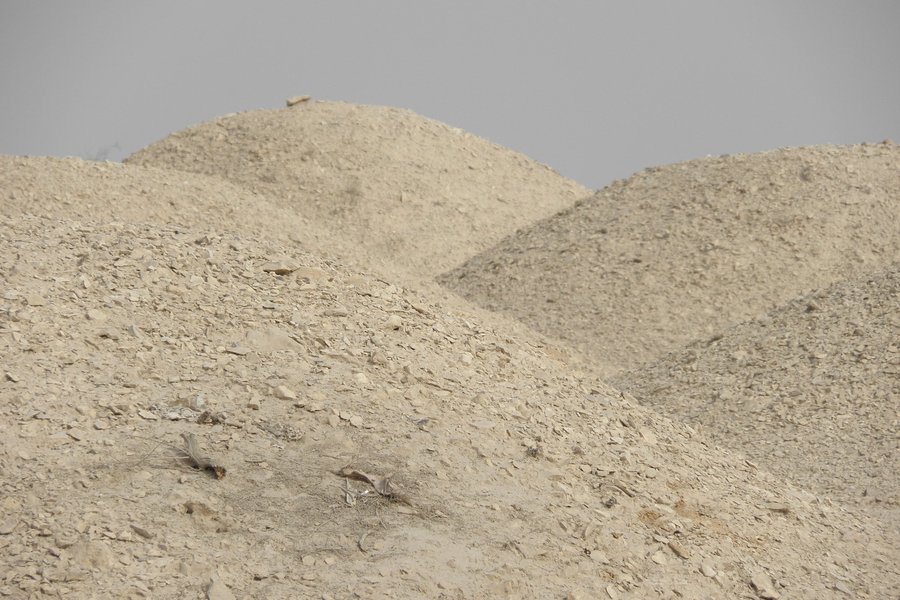
We visited most of Bahrain’s T List sites in 2005 and, with Bahrain hosting the 2011 WHC, are interested to guess which (if any) might be inscribed as that country’s “reward”! Could it be the “Hamad Town Tumuli Moundfield” site? Well this site appears to have been superseded by the “Burial sites of Dilmun and Tylos” which includes the mounds around Hamad in tis own right so it isn’t clear why Bahrain has left it on its T List. We saw these but felt that the Aali area provided a better site if you have to choose just 1 (there are plenty to choose from and you are likely to drive past several in getting to one to view in detail).
Keep reading 0 comments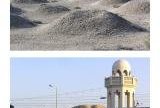
We visited most of Bahrain’s T List sites in 2005 and, with Bahrain hosting the 2011 WHC, are interested to guess which (if any) might be inscribed as that country’s “reward”! Could it be the “Burial Ensembles of Dilmun and Tylos”? Now, right from the start, I must make it clear that we were blown away in amazement at these remains – burial mounds stretching into the desert as far as the eye could see (photo 1). At first sight one thinks that they must be the detritus from some huge modern construction project and that dumper trucks have left thousands of mounds of unwanted spoil. But no – each one represents a single or family burial. Go to the magnificent Bahraini National Museum to see a reconstruction of one shown in section. Most of the mounds are 1-2 mtrs in height but, in some areas, there are enormous hills which tower over the surrounding houses. Their age covers the period “mid 3rd millennium B.C. till the mid 1st millennium A.D.” – such continuity, such enormity!!
Now this T List site was only added in May 2008 and encompasses 11 different sites of moundfields and associated remains. Surprisingly, these 11 include 2 other sites from Bahrain’s earlier T List which dates back to Sep 2001 and which have been allowed to remain in the new list
a. The Hamad Town Tumuli moundfield
b. The Saar Honeycomb tombs
So could this be Bahrain’s 2011 “prize”? Certainly the fact that the new …
Keep reading 0 comments
